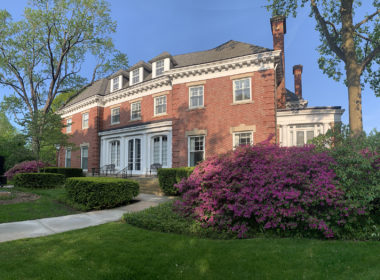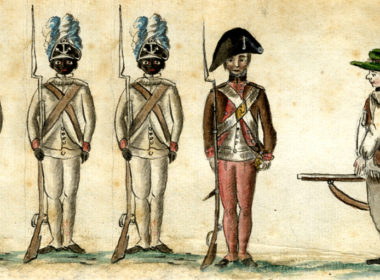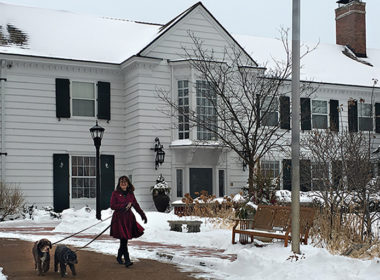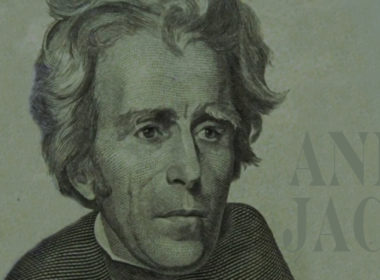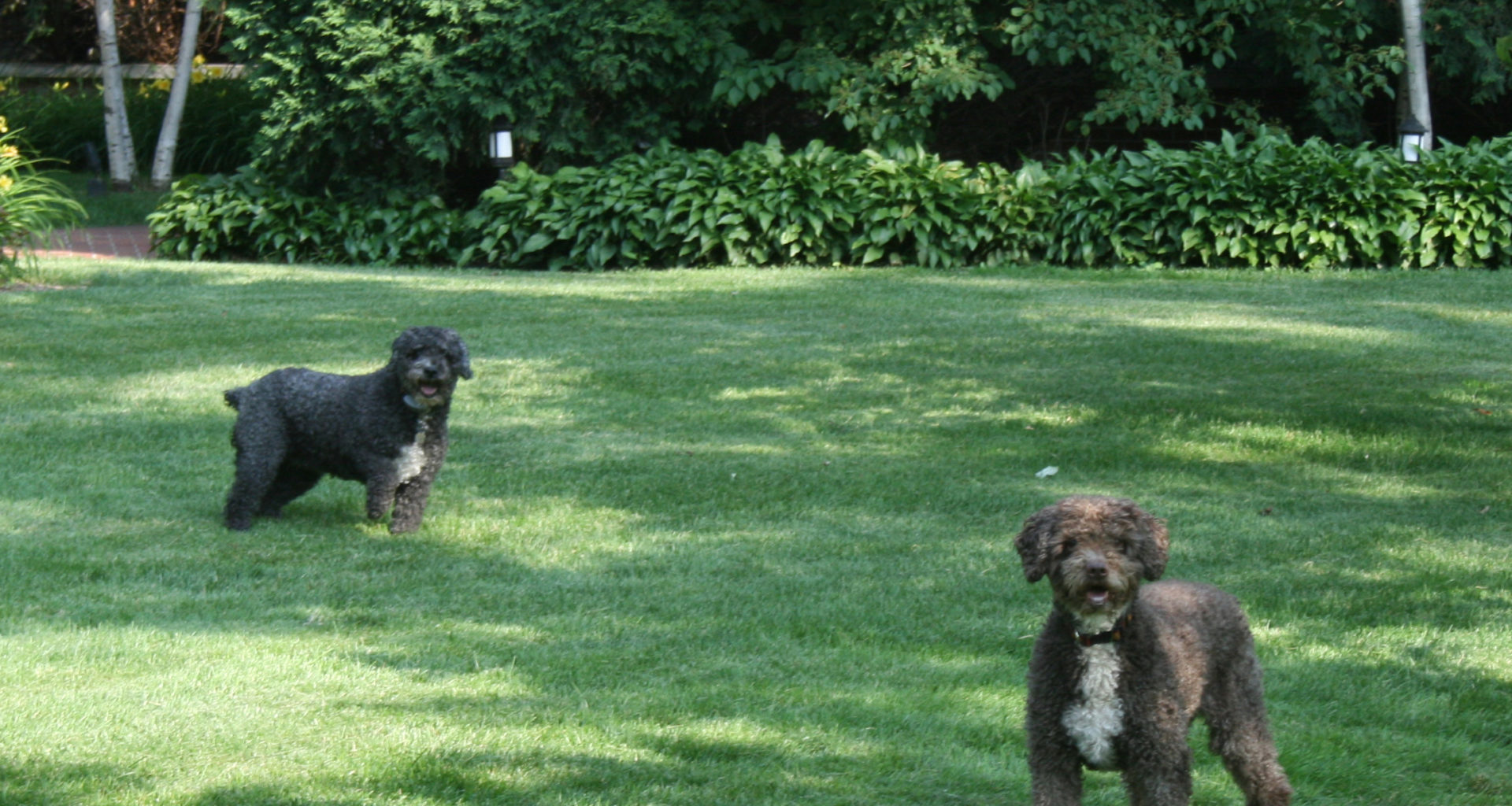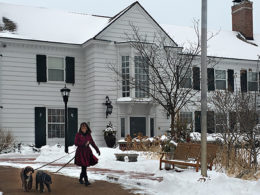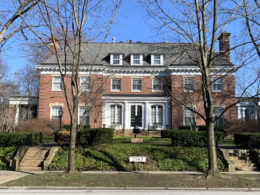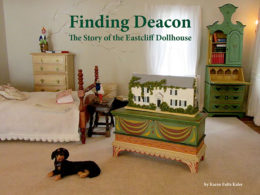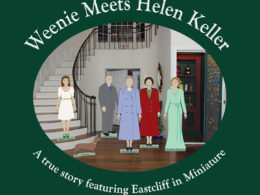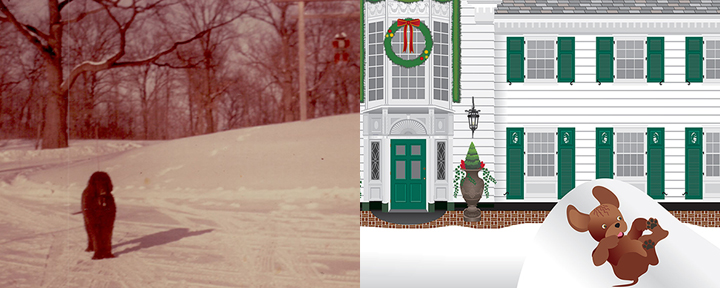
Left: Photo courtesy of the Brooks family, Right: Illustration from Rusty Goes Swimming
The apocryphal story of Rusty, Markell Brooks’ Irish water spaniel, was the story that first stirred my interest in researching the veracity of many Eastcliff stories. Rusty set me on the path to discovering more stories. I found that truth was better than fiction, although others may disagree. You need to read the book to form your own opinion. In my manuscript of Eastcliff: History of a Home, I titled the last chapter “Rusty, at Last.”
While Rusty’s story is not included here, his photo is, as well as photos of a few other animals, some of them were family members, others were just passing through.
Dwight Brooks with Rusty while home on leave in 1950, Photo courtesy of the Brooks family
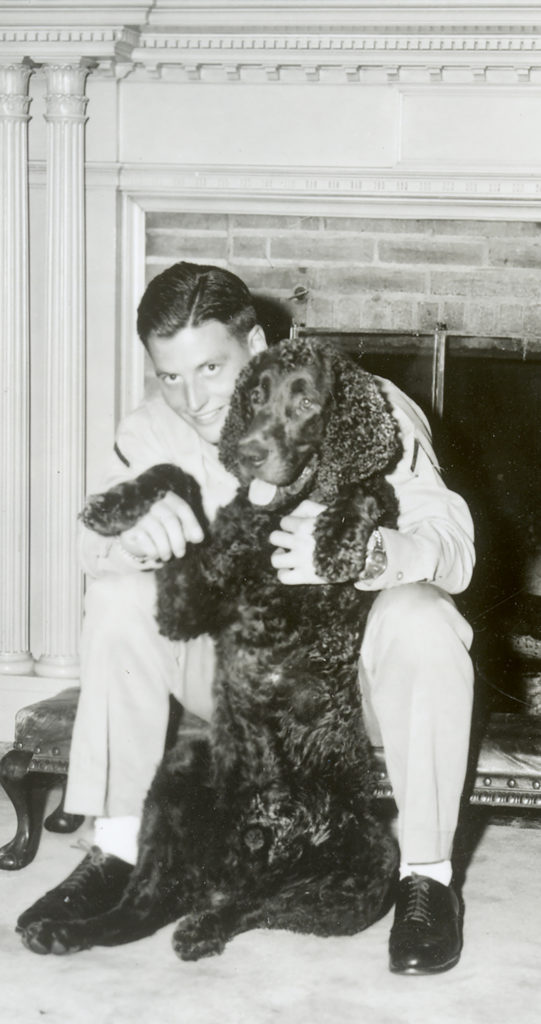

Photos courtesy of the Brooks family

Hawthorne the pigeon
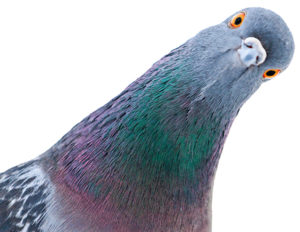
Kathy Moos had a pet pigeon named Hawthorne, whose story is told in Eastcliff: History of a Home. Hawthorne would walk along the beautiful stone wall between the Eastcliff main house and the carriage house. When we moved into Eastcliff, I noticed that the stone wall looked very much like the walls at Ashford Castle in County Mayo, Ireland. We visited there in June of 2011, shortly before moving to Minnesota. While thinking of the University of Minnesota’s amazing Raptor Center, I did a “hawk walk” with a hawk named Wexford at the Ireland School of Falconry at Ashford Castle. (I highly recommend it, if you’re in the neighborhood.) When I saw the Eastcliff stone wall with its green gate, I thought that Wexford would feel very much at home at Eastcliff. I imagine that Kathy’s pigeon, Hawthorne, was very pleased with himself to be strutting along this wall. Perhaps he felt like a hawk when he flew up to tell Kathy thank you for his great life at Eastcliff.
Years later, a mother duck brought her babies over for a swim.
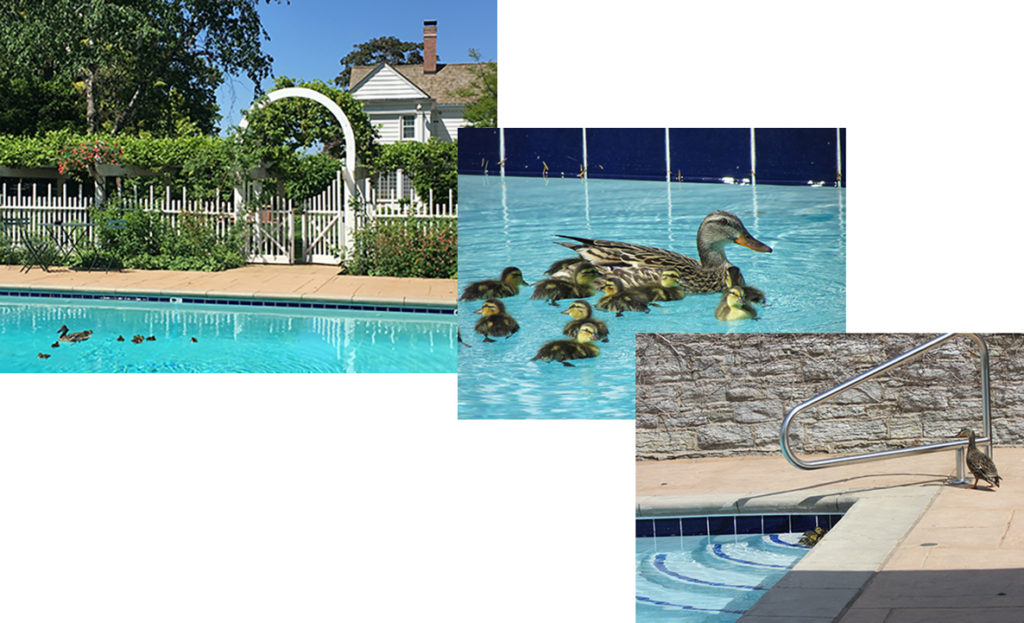
If you look closely at the third photo, you can almost hear the hen extolling her ducklings to try to jump out.
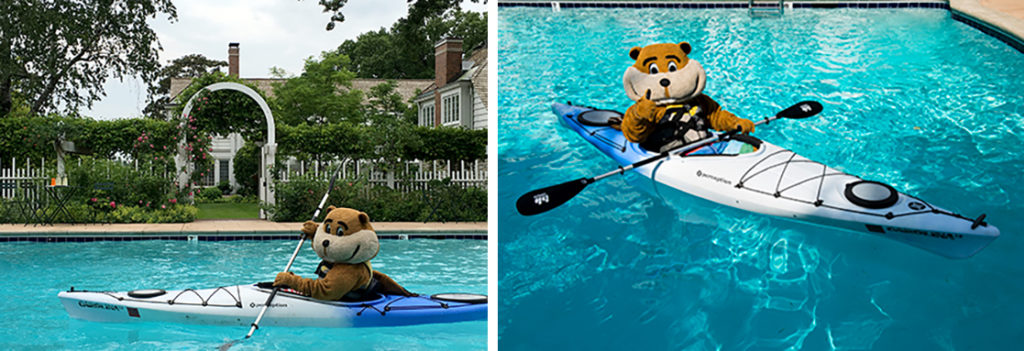
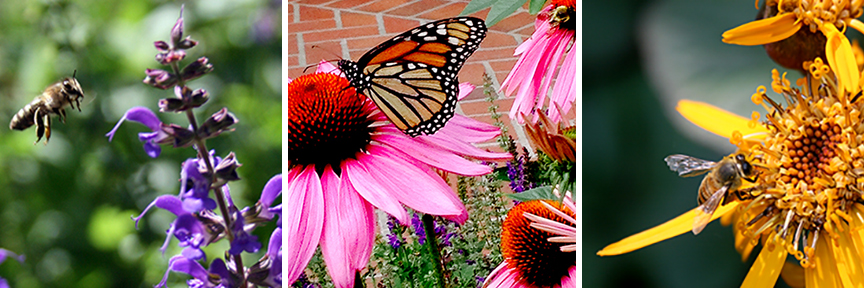
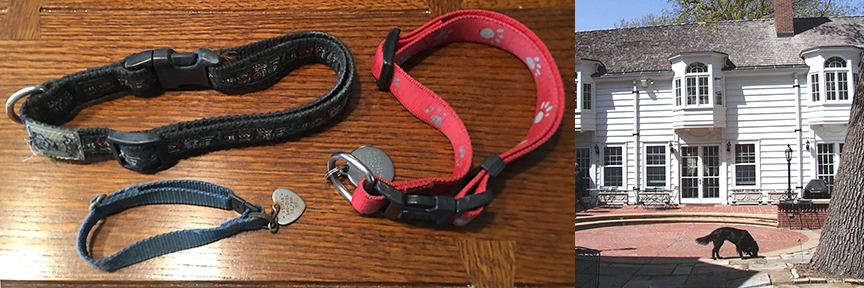
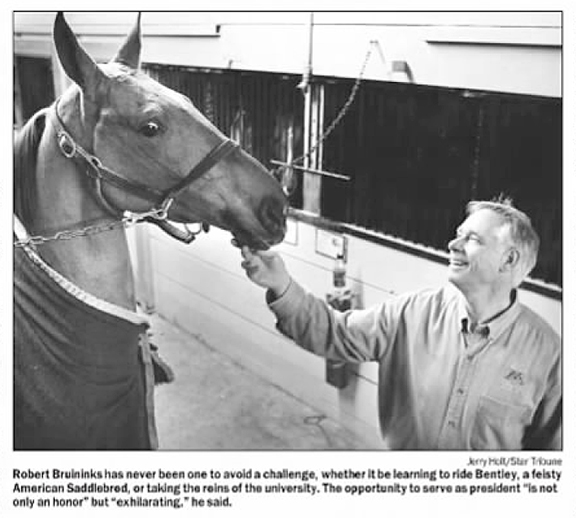
Bob Bruininks and his horse, Bentley (It’s unlikely Bentley visited Eastcliff, but at least one other horse did.)
Newspaper clipping from the Minneapolis Star Tribune, November 17, 2002
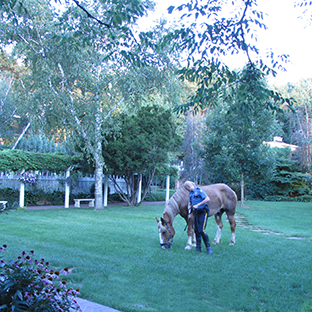
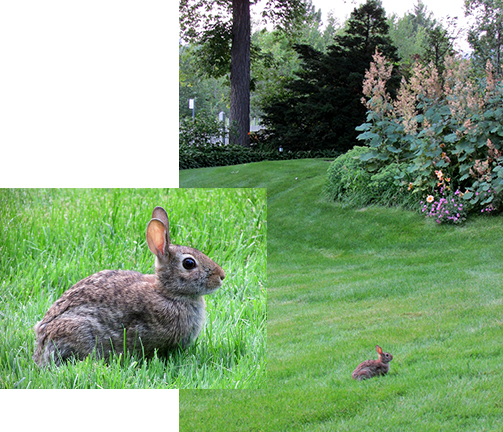
When I first saw a rabbit in Minnesota, I thought it was a squnny—a squirrel bunny cross—as its ears were so short. Minnesota rabbits seem to have evolved to have shorter ears than the Eastern cottontails I was familiar with.
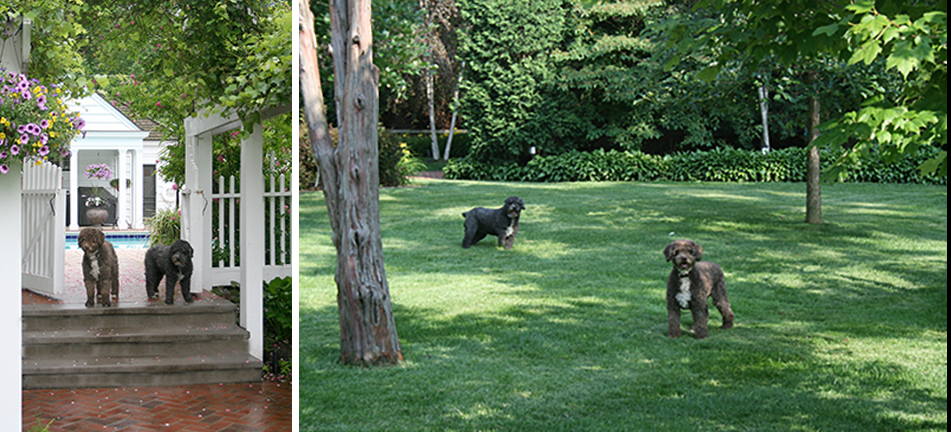

The bulls, the cow, and Prairie Home sweet home
Although the bronze bull sculptures on the University of Minnesota St. Paul campus have never visited Eastcliff, they are handsome and popular, so a photo is worth including here. Each of the three is about seven feet wide and they range from four to seven feet in height and ten to thirteen feet in length. After they were placed on the campus, they got into a little mischief as pranksters moved them around. They were soon tethered.
According to the University’s Weisman Art Museum (WAM) website, artist Peter Woytuk stated:
“The inspiration for the bulls probably had its origins at the Minnesota State Fairgrounds, just a stone’s throw from where the sculpture resides. As a young sculptor I remember being struck by a number of enormous reclining bulls inside the livestock barn at the fairgrounds. I was particularly taken by the contours of their backs and their great, almost sprawling mass.
“Years later, working in northwestern Connecticut I noticed the similarity between the shapes and lines of the hills around my studio and the contours and silhouette of the bulls I had seen years earlier. Thus the idea of the bulls as enormous landscape was formed.
“I want the viewer to be overwhelmed by these larger than life bovine masses as I was years ago at the Minnesota State Fairgrounds.”
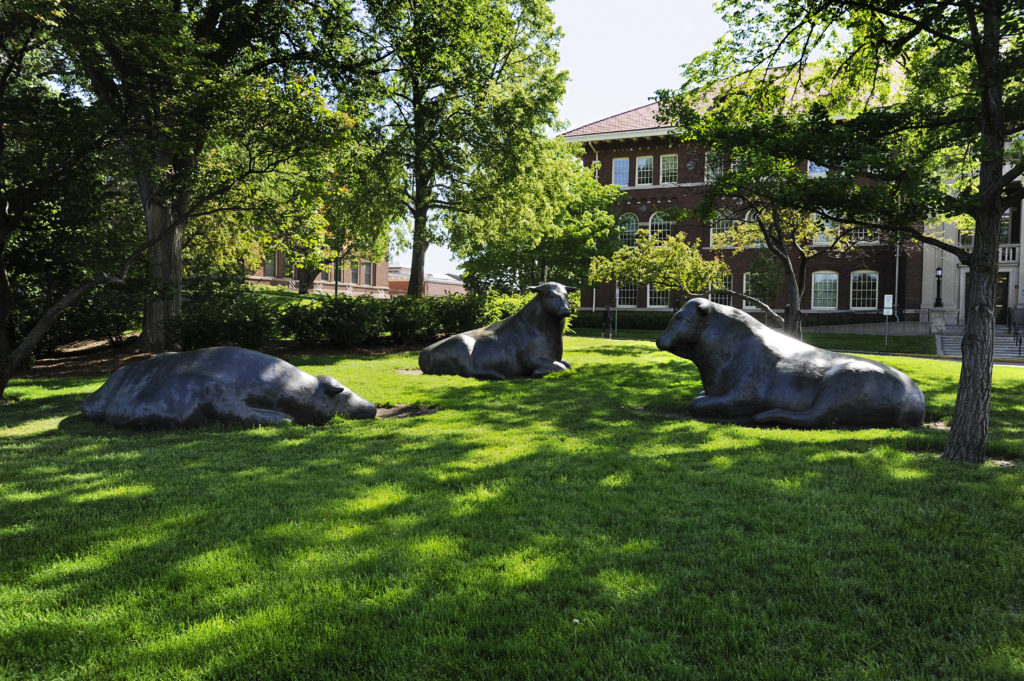

Four years before the (no longer mischievous) bulls arrived on campus, a cow visited Eastcliff. Garrison Keillor was responsible for the cow’s first visit Eastcliff and, as described in Eastcliff: History of a Home, there was a delightful second visit.
The following text on Garrison Keillor (and other tangents) doesn’t fit in this section on animals, but neither does it fit anywhere else. I’m including it as I find it is rather interesting.
Most Minnesotans are familiar with Garrison Keillor, but for younger readers, a brief introduction: Keillor began performing on Radio K while a student at the University of Minnesota; he graduated in 1966. He is most known for the radio show Prairie Home Companion and for inventing Lake Wobegon, Minnesota, “where all the women are strong, all the men are good looking, and all the children are above average.”
Someone told me that Garrison Keillor had had a long-term relationship with former Eastcliff resident Kathy Moos. Kathy was said to be the woman whom Keillor lived with for nine years and scandalously left for the former Danish exchange student who became the second of his three wives. As it turns out, Margie Moos was the daughter who did not have a relationship with Keillor (nor did wither of her sisters). The Margaret Moos who was the founding producer of Prairie Home Companion began in that role when “our” Margaret Moos was only thirteen or fourteen years old.
Following Keillor’s waxing about his new love on the radio show that his soon-to-be-former partner helped create, the Minnesota public was not so fond of the star. He moved away, and retaliated by creating a drunken Irishman character as an insult to newspaper critic Nick Coleman. Or perhaps he created Rick, the TV dog, who was a stinky Irish setter who dug through trash as an insult to newspaper critic Nick Coleman. Either way, remember the name Nick Coleman.
After moving back to Minnesota, Keillor sought to repair his image. He performed at the University. Looking back on those days (and perhaps in anticipation what might lie ahead), he wrote an article—a classic Garrison Keillor article, the writing is staggeringly beautiful—for National Geographic in 2014, in which he admits, “I come home and feel so well understood. I almost don’t have to say a word. I was not a good person. . . . I have offended righteous people. People around here know all this about me, and yet they still smile and say hello, and so every day I feel forgiven. Ask me if it’s a good place to live, and I don’t know—that’s real estate talk—but forgiveness and understanding, that’s a beautiful combination.”
Returning to Nick Coleman: in another instance of realizing that so many people are connected to one another in Minnesota, I found that Coleman’s stepmother, Deborah Howell, married former University President Peter Magrath around that the time of the Keillor controversy.
I discovered the Nick Coleman/Deborah Howell/Peter Magrath connection from reading event files, of all things. In 1998, during the Yudof administration, there was an Eastcliff dinner to celebrate the dedication of the Magrath Library in honor of President C. Peter Magrath. Guests included Peter and his wife Deborah Howell, Ken Keller and Bonita Sindelir, and family guests, including brothers Nick [Nicholas J.] and Chris Coleman, and Chris’s wife Connie. A handwritten note with the guest list suggested that Nick Coleman should not sit next to Ken Keller.
This little piece of paper was intriguing for two reasons. First, how was Peter Magrath related to our friends Chris and Connie Coleman? Chris graduated from the University with both a BA and JD. Chris and Connie’s son attended the University during our tenure. Chris was elected Mayor of St. Paul eight years after this 1998 dinner. He was our mayor before Melvin Carter III was our mayor.
Footnote to this footnote: Melvin has a master of public policy degree from the University’s Humphrey School. He spoke at a Humphrey School event, where I told him I was going to vote for him for mayor. He says that was before he ever considered running for mayor. I’m not prescient; he’s a natural fit.
Back to Chris as a Peter’s relative: Peter’s third wife, Deborah Howell, who incidentally was one of the first women to head a large daily American paper when she took over the St. Paul Pioneer Press in the 1980s, had married Christopher and Nicholas J. Coleman’s father in 1975. (At the time of the marriage, Deborah’s husband Nicholas D. Coleman was the Majority leader of the Minnesota Senate.) He died in 1981. Deborah married Peter in 1988.
Second question about the not-sit-next-to note, Ken Keller is very charming. I would enjoy sitting next to him at dinner on a regular basis; who wouldn’t want to sit next to Ken? Some of you savvy readers realize that perhaps it was Ken who wouldn’t have enjoyed Nick’s company. It turns out that Nick Coleman, who wrote for both the Star Tribune and the St. Paul Pioneer Press, had been a harsh critic of Keller during the 1980s Eastcliff renovation.
As a sad (second) footnote to this footnote, Deborah Howell died tragically in 2010 when she was hit by a car while she and Peter were vacationing in New Zealand. Star Tribune columnist James Lileks said of her, “She was the most fearless, fierce, fair and honest journalist I’ve ever met. The only thing she loved more than her profession were the people with whom she worked—it was like living with a mixture of Lou Grant and a Cub Scout den mom. . . . If any of her reporters had written about someone like her, she might have sent the story back and said, ‘C’mon. Too good to be true. Get some more sources.’”
(Pamela Miller and Vince Tuss, “Deborah Howell, prominent editor, killed in car accident,” Star Tribune, January 2, 2010.)
Please note: The above text was edited from Eastcliff: History of a Home due to lack of space. It is intended as a supplement to the book.

